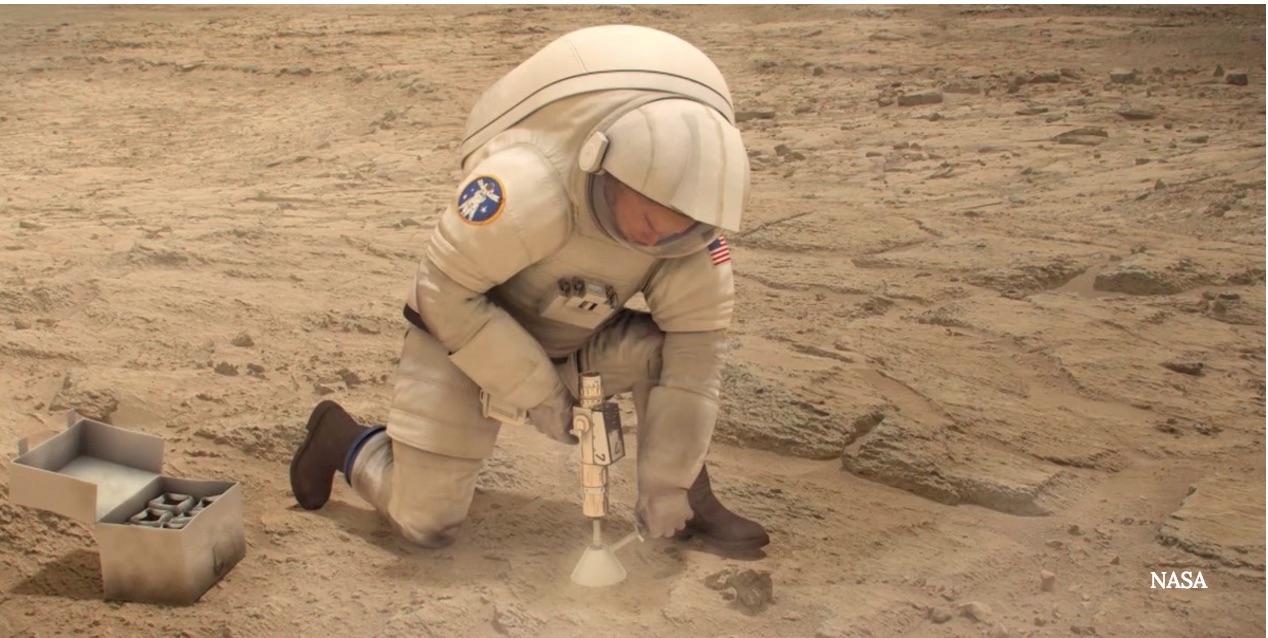NASA's Hi-Tech Gauze Could Heal Wounded Mars Astronauts

Imagine that NASA's Journey to Mars is approved, and you are an astronaut on the Red Planet in the 2030s. Or that you're on the first SpaceX Interplanetary Transport System (ITS) commute. During a routine activity on the Martian surface -- say, drilling out rock samples, as you see here -- you lose your balance and fall, cutting your leg pretty badly.
Obviously the crew would have medical training to assist, but in the interest of survival -- and the money it cost to get you there! -- it would be great if some technology was available to help you heal faster so you can get back to work.
RELATED: The (Space) Drugs Don't Work
One possibility could be electric gauze. NASA is working on the new technology and early results are showing promise for athletes on Earth. As for our future Mars astronauts, in different gravities blood behavior can change, so there's no firm word yet on if this will work on other planets.
"What we have here is a technology that can have a large impact on wound healing of all sorts," said Emilie "Mia" Siochi, a senior materials scientist at NASA's Langley Research Center, in a new video released by the agency:
"What's unique about this material is that it's electroactive -- meaning that if you warm it up, if you push on it, if you apply any load on it, even if you just blow on it -- it actually generates voltage," Siochi added. And yes, body temperature is enough to activate it, helping to bond wounds.
RELATED: Drug Could Repair Microgravity Health Damage
Get the Space.com Newsletter
Breaking space news, the latest updates on rocket launches, skywatching events and more!
NASA created a process to apply voltage as the polymer is ejected from a syringe. This creates a fiber. If the fibers are aligned correctly, cells on a wound use it as a scaffold, helping the wound to heal faster, early research shows. One easy way of aligning them would be to put them in a gauze or bandage, which also protects the wound to reduce infection, Siochi said.
"The new apparatus provides a simple and inexpensive means of producing fibers and mats of controlled fiber diameter, porosity, and thickness," NASA wrote in a statement.
You can read more about the technology at the NASA Technology Transfer website.
Originally published on Discovery News.
Join our Space Forums to keep talking space on the latest missions, night sky and more! And if you have a news tip, correction or comment, let us know at: community@space.com.

Elizabeth Howell (she/her), Ph.D., was a staff writer in the spaceflight channel between 2022 and 2024 specializing in Canadian space news. She was contributing writer for Space.com for 10 years from 2012 to 2024. Elizabeth's reporting includes multiple exclusives with the White House, leading world coverage about a lost-and-found space tomato on the International Space Station, witnessing five human spaceflight launches on two continents, flying parabolic, working inside a spacesuit, and participating in a simulated Mars mission. Her latest book, "Why Am I Taller?" (ECW Press, 2022) is co-written with astronaut Dave Williams.









